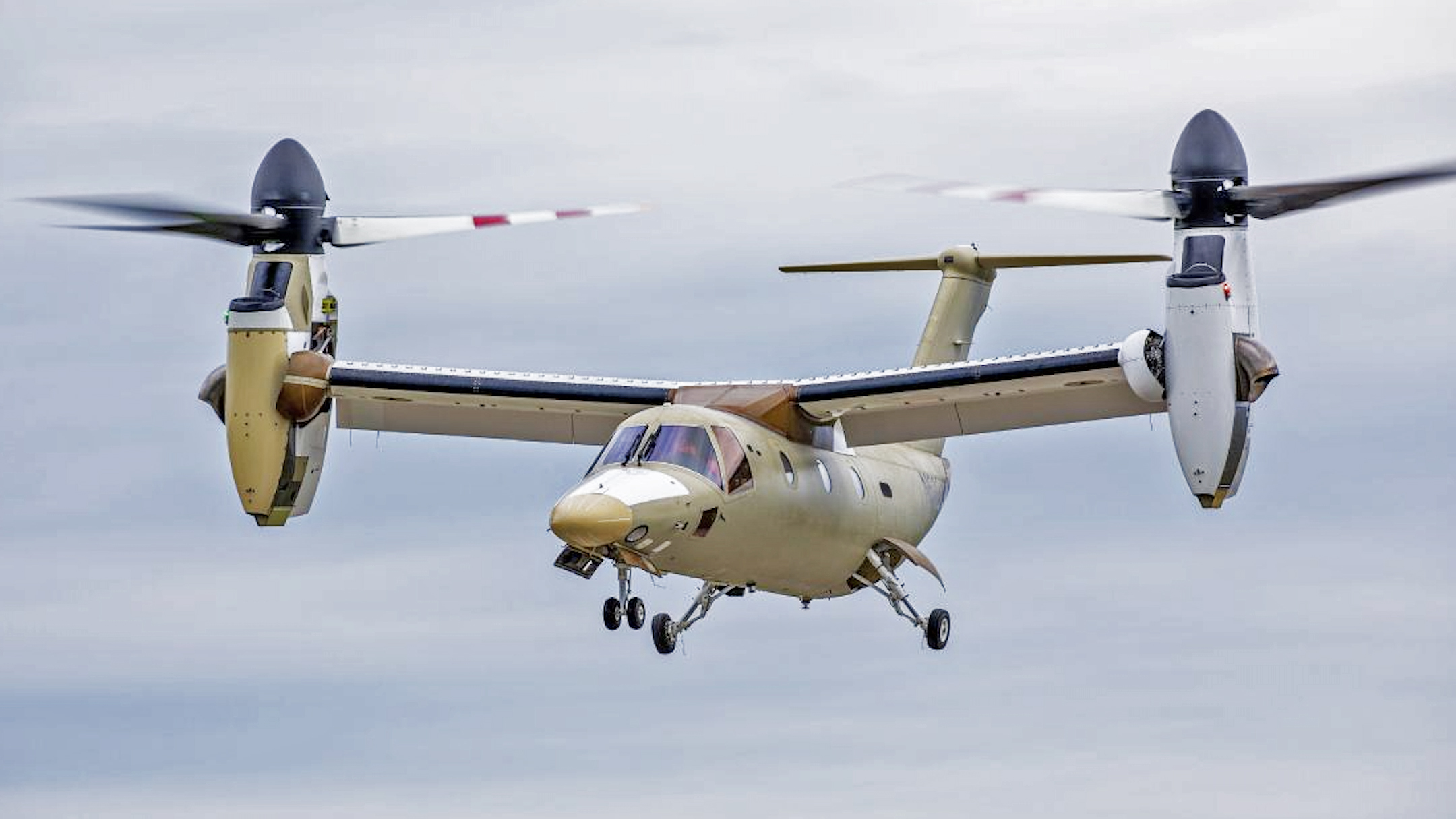The maiden flight of the first production Leonardo AW609 is another step toward the operational fielding of another tiltrotor aircraft, which would join the so far unique Bell Boeing V-22 Osprey, as well as become the first commercial aircraft in its class. After years of development and delays punctuated by a fatal crash, the AW609 looks increasingly ready to enter service, with the Italy-headquartered company hoping it will eventually undertake military missions, as well as flying for civilian customers.
The first production AW609, known as AC5, completed its maiden flight at Leonardo’s site in Philadephia, Pennsylvania, in the United States on October 13, although the company only announced the milestone yesterday. The test flight involved trialing the aircraft’s general handling and systems. Next, AC5 will be used to support “mission capability evaluation and expansion” with the aim of achieving U.S. Federal Aviation Administration (FAA) certification, which will allow it to undertake real-world missions in the hands of civilian operators. Reports suggest it could now enter service next year.
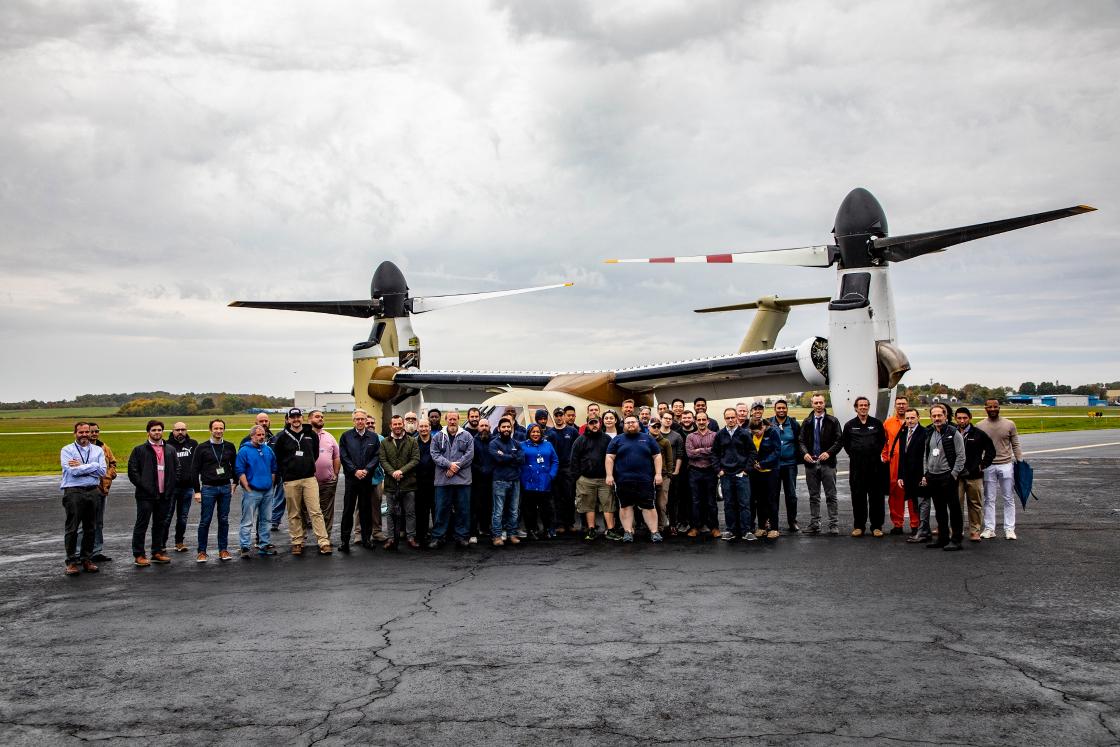
At the same time, Leonardo confirms three additional aircraft are on the final assembly line in Philadelphia. The launch customer in the United States is the Bristow Group, which operates helicopters around the globe for a variety of government and commercial clients, being best known for its search and rescue (SAR) work, as well as offshore transport and air ambulance services. Already active in the development program, Bristow is actually slated to receive aircraft AC6, which will leave AC5 available to Leonardo for continued work on the flight-test certification program, as well as customer demonstrations.
Exactly how many AW609s have been ordered is currently a closely guarded secret. As of 2015, it was reported that the order book included “nearly 60 aircraft,” although it’s unclear how many of these were confirmed and how that figure might have changed in the years since.
The other AW609s produced so far are all test aircraft. AC1, which was first flown as long ago as 2003, is now used for ground testing in Italy. AC2 was lost in a fatal flight-testing crash in Italy in 2015. AC3 has been used for engine handling performance and load level surveys, in the United States. Finally, AC4 is also being used for test work in Italy but has also taken part in demonstration tours for potential customers around the globe. The test fleet has so far completed around 1,900 flight hours.

The aircraft began life as the BA609, its designation reflecting the fact it was initially a joint Bell/Agusta program, launched in 1998. In 2011, it became an entirely AgustaWestland effort, with that company being renamed Leonardo in 2011.
The AW609 embodies the key advantages — and disadvantages — of the tiltrotor concept.
On the one hand, the rotors at the ends of its wings powered by Pratt & Whitney PT6C-67A turboprops ensure the vertical takeoff and landing versatility of a helicopter. Once those same engine nacelles rotate, the AW609 benefits from performance much closer to that of a conventional fixed-wing turboprop aircraft, especially in terms of speed and range.

Those benefits come at a significant cost and also impose penalties in terms of technological complexity. It’s no coincidence that the V-22’s path to service was no less tortured than that of the AW609 has proven to be. Even in service, the V-22 has had less than outstanding readiness figures and different technical problems have hampered its availability.
If Leonardo’s gamble on a commercial tiltrotor pays off, it could well revolutionize at least a portion of the commercial and public services currently fulfilled by conventional helicopters.
At the same time, as the V-22 has shown, the tiltrotor concept has enormous relevance for military operators, especially in the fields of combat search and rescue (CSAR), special operations, amphibious assault, as well as humanitarian and disaster relief.
The AW609 is considerably smaller than the V-22, however, with a maximum gross weight of 18,000 pounds compared with 52,000 pounds for the Osprey (in VTOL mode). It can accommodate up to 12 passengers in a high-density configuration, while a V-22 carries double that, or more still, depending on seating arrangement. The Osprey also comes equipped with a rear ramp, an aerial refueling probe, and the ability to transport slung loads.
Nevertheless, the AW609’s combination of speed (cruise speed is 270 knots) and range (up to 1,000 nautical miles with auxiliary fuel), the ability to carry a useful load of 6,000 pounds, plus a 600-pound door hoist, makes it attractive for certain military and paramilitary missions. The pressurized cabin of the AW609 is also a major difference compared with the V-22 and allows it to fly above poor weather and provide a more comfortable flight than any helicopter. That would be a particular advantage for SAR and medical evacuation, as well as for VIP missions.

The AW609 has already generated military interest, with the Joint Aviation Command (JAC) of the United Arab Emirates (UAE) having become the launch customer for the AW609 TiltRotor SAR variant. In November 2015 the JAC signed a memorandum of understanding covering three firm orders and three options, with its first aircraft originally due to be delivered in 2019.
“The AW609’s unique speed and range characteristics, combined with its ability to hover, will dramatically increase SAR mission capabilities of the UAE’s Joint Aviation Command,” the JAC said. “We look forward to operating the AW609 TiltRotor and utilizing the speed advantage it brings.”
The self-deployment of AW609 prototype AC4 from its Italian test airfield to the Dubai Airshow in the UAE last November provided a dramatic illustration of the tiltrotor’s long-range capabilities.
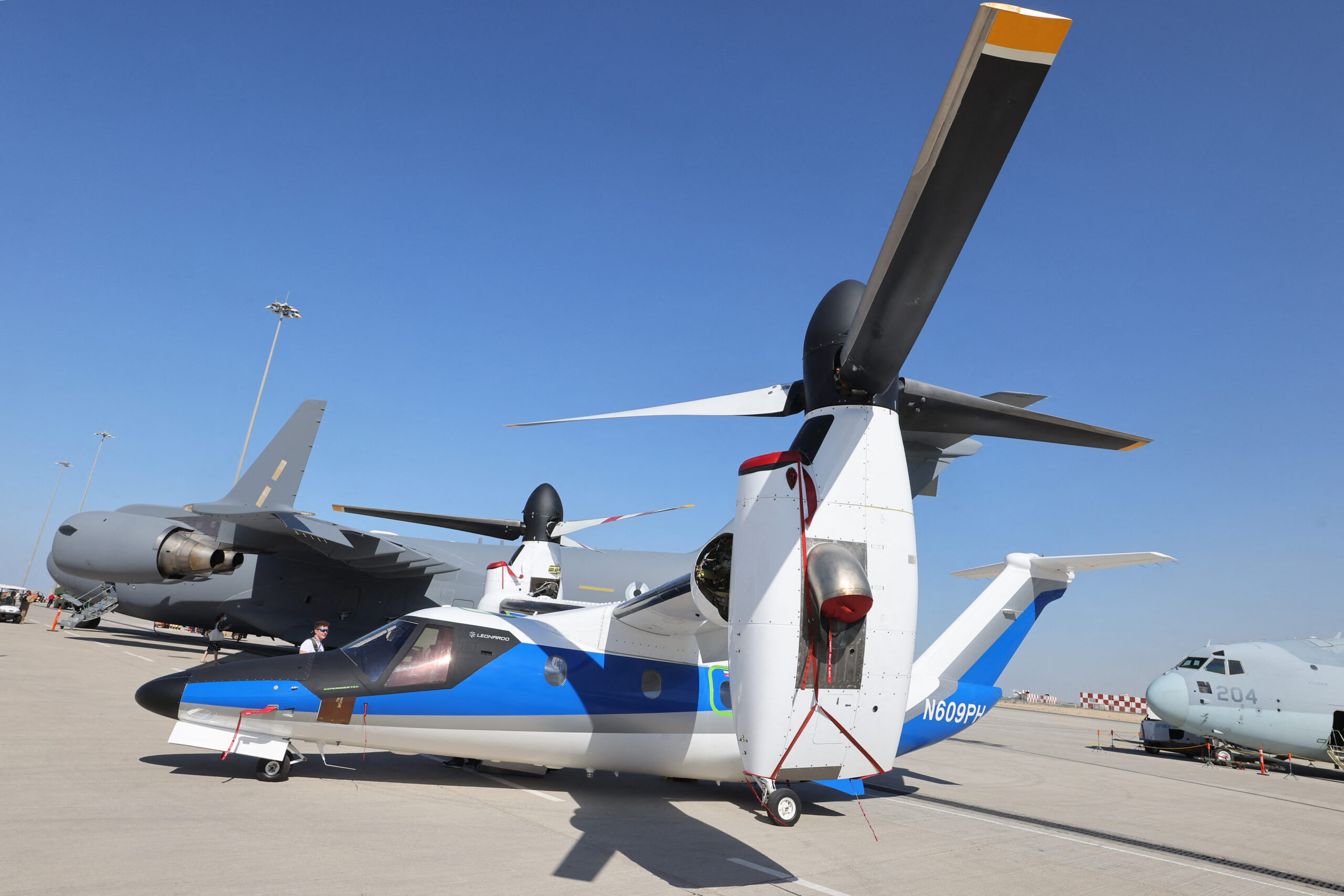
Few details regarding the status of the UAE deal have emerged since then, although the first flight of a production-standard aircraft would appear to be good news for the JAC and for other potential military customers.
The JAC provides an interesting case in point for the kinds of military operators that might turn to the AW609 to meet their more specialist requirements. Formed in 2012, this unit absorbed most of the UAE’s rotary-wing military assets, including AH-64 Apaches and UH-60 Black Hawks, but also operates several fixed-wing aircraft, including IOMAX Archangel counter-insurgency (COIN) aircraft and armed AC-208 Grand Caravans. As such, the JAC encompasses a range of missions from CSAR and special operations, to strike and air mobility. The versatility of the AW609 suggests that it could be a good fit for the command, although there is a question mark about its ability to be adapted for armed configurations.
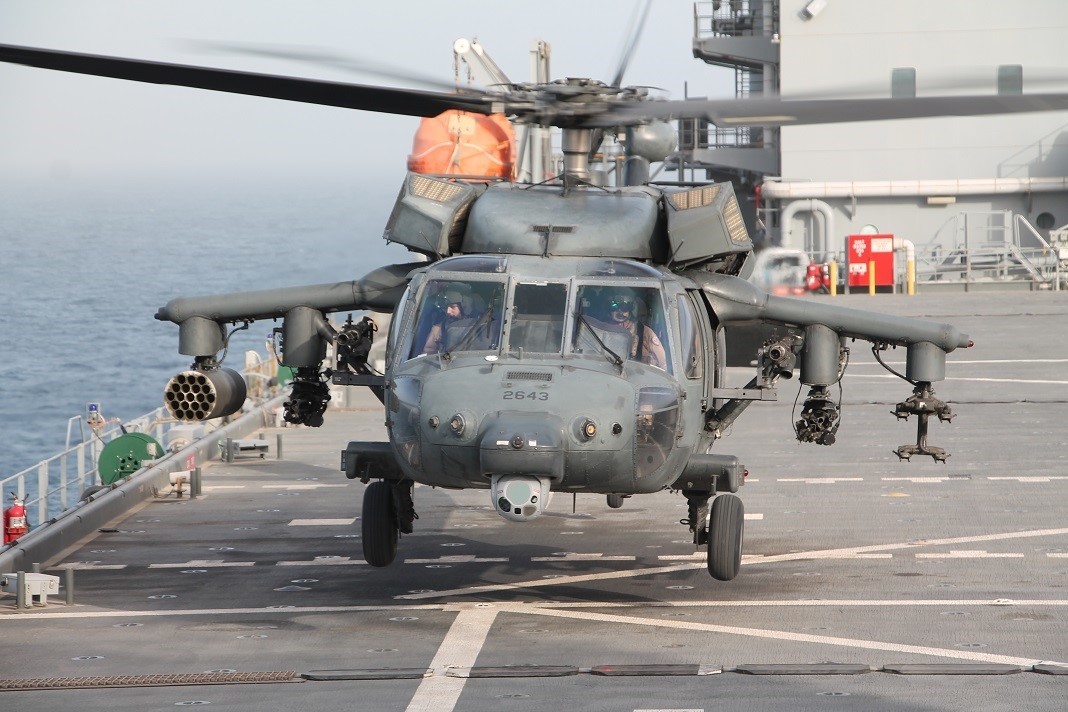
In Italy, too, the prospects of the AW609 gaining military orders look fairly good. Rare among European air arms, the Italian Air Force has invested heavily in its CSAR capabilities, with a dedicated wing, the 15° Stormo, that operates specially adapted HH-101 Caesar and smaller HH-139 helicopters, also for special forces support missions. Once the AW609 becomes available, this would very likely also be an attractive addition to the inventory.

While the V-22 has so far only secured a foreign sale to Japan (and that for a very modest number of aircraft), other countries, including Israel and Indonesia, have shown interest in the Osprey.
In fact, the U.S. State Department has already approved the Foreign Military Sale of eight MV-22s to Indonesia, worth around $2 billion together with associated equipment and support, although Jakarta has yet to commit to a purchase.
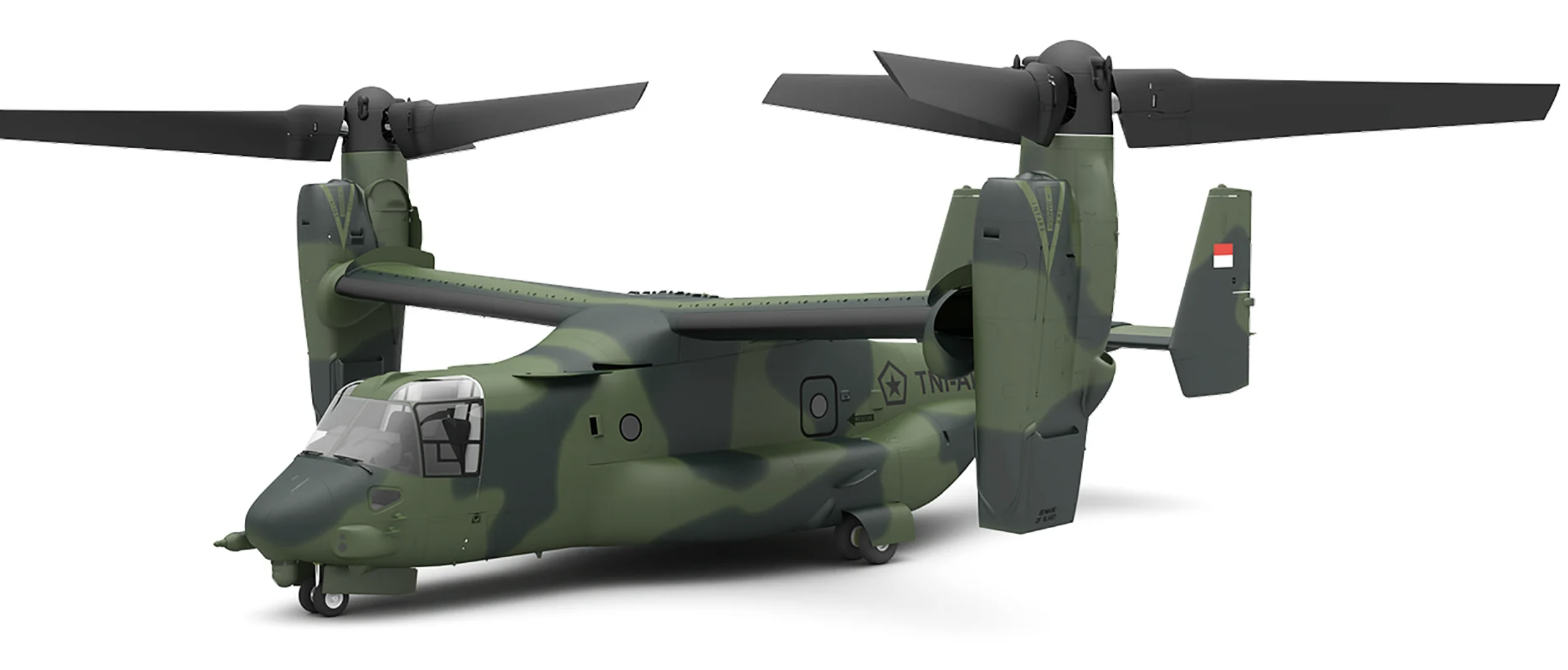
While the AW609 doesn’t offer the same level of capabilities, at least in some regards, as the larger Osprey, it’s also notably cheaper, according to Leonardo. An MV-22 costs roughly $75 million, while Leonardo puts a price tag of “between $20 million and $30 million” on the AW609, although this would likely be a baseline civilian model, without military modifications, including sensors, self-protection equipment, and possibly weapons. While it’s still considerably more expensive than a conventional helicopter of similar size, it beats the Osprey on price and could provide an attractive-level tiltrotor capability, while flying many of the same missions at a much-reduced cost.
There are also certain missions for which the AW609 would appear to be a better fit than the V-22, including military executive transport, for which the Osprey has also been pitched in the past. Here, again, the cabin pressurization is a big plus point.
As we have reflected in the past, “A ‘VV-22B’ would be the ultimate toy, capable of flying point-to-point, from palace to yacht, in a battle-proven aircraft equipped with the latest communications and defensive countermeasures.”
Especially in countries where the lines between private and government are blurred, including in the Gulf, Leonardo would likely hope that its AW609 would have a good chance of picking up any such orders.
Coastguard-type operations are another mission set that Leonardo has talked up for the AW609. The tiltrotor’s combination of long-range, high speed, and vertical lift (including winch) makes it that much more effective — after all, each minute can make the difference between life or death in SAR. Its performance also means that it can cover a wider area, meaning a requirement for fewer aircraft and bases. Its unique qualities would also mean it could replace traditional mixed fixed/rotary-wing rescue fleets, Leonardo says, leading to cost savings.

However, it’s another Bell product that could ultimately thwart Leonardo’s military ambitions with the AW609. Now in development, the Bell V-280 Valor employs second-generation tiltrotor technology and is smaller and potentially more affordable than the V-22, while still offering similar baseline capabilities in some respects. That could make it a real threat to the AW609, at least in the military market.
On the other hand, the V-280’s fortunes will likely be highly dependent on whether the U.S. Army selects the type under its Future Vertical Lift (FVL) initiative, or whether it opts for a somewhat less radical solution.

In the end, the fact that the AW609 is being tailored primarily for civilian and para-public customers may well end up paying off, although it’s hard to imagine the project could yet be a financial success. Clearly, the demands of achieving civilian certification for a tiltrotor provide a high barrier to entry. On the other hand, if it does manage to establish a broader civilian customer base, that should help drive down costs as well as help ease maintenance issues (which have dogged the V-22 in particular).
With the first production machine now in the air, the AW609 is closer to starting to fulfill its undoubted potential, although there is still some way to go yet and, after 20 years in development, coupled with the advances in technology in the meantime, this could end up being a very niche product if it breaks through. But with a dearth of aircraft available that can match its performance, Leonardo’s tiltrotor may even be able to succeed where the Osprey has so far failed and even generate multiple international sales to government customers.
Contact the author: thomas@thedrive.com
